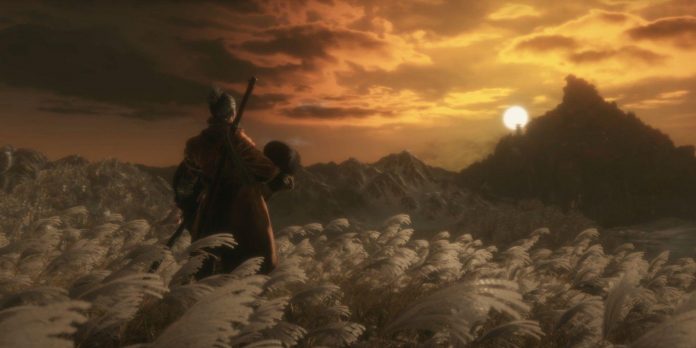Sekiro: Shadows Die Twice brought the traditional Dark Souls formula to a whole new world by introducing a new version of the challenging yet engaging gameplay to a more traditional setting in a fictional version of Japan. Even though Sekiro: Shadows Die Twice is tied to the Soulsborne family of games, it is definitely the black sheep of the group that has done a lot to ensure that it stands out from the rest.
Sekiro’s focus on well-timed deflections over blocking, rolling, and traditional parrying has piqued the interest of many fans and has essentially reinvented the already diverse and challenging combat within the Soulsborne games. On top of changing the gameplay, Sekiro has gone against the grain of Dark Souls’ storytelling by featuring a fairly straightforward storyline and named protagonist. Considering Sekiro is such a unique entry in the series and the canon ending leaves a lot of loose ends, it’s worth asking whether the hit title warrants a sequel.
How Sekiro’s Ending Sets Up a Sequel
Like many other FromSoftware titles, Sekiro features different endings that depend on decisions the player makes during the course of the game. In true Soulsborne fashion, the path to the true ending is exceptionally convoluted. Of the four different endings in Sekiro, the canon ending is titled Dragon’s Homecoming. This ending requires the player to acquire multiple different items throughout the story before defeating the final boss. Like other canon endings, the game does not help the player in any way but instead relies on them to read into NPC dialogue and discover how to change the ending of the game on their own.
Dragon’s Homecoming has Wolf cooperating with the Divine Child to end the curse of Kuro’s Dragon’s bloodline. To do so, the Divine Child must absorb Kuro’s spirit and return to the birthplace of the Divine Dragon. The final cutscene shows the Divine Child and Wolf announcing they are embarking on a journey to the west, to finally remove the divine powers of the Dragon bloodline from Japan.
Though the other three endings are more cut and dry, Dragon’s Homecoming essentially implies that there is more to this story and importantly leaves Wolf alive and traveling with the Divine Child, likely as a bodyguard and also to honor Kuro. Though it is not unlike creative director Hidetaka Miyazaki to leave loose ends that are never neatly tied off, the final dialogue in Sekiro makes a sequel very possible.
What a Sequel to Sekiro Could Entail
Sekiro’s story leaves very little to interpretation, but that is not necessarily a bad thing. Though it is unlike other Soulsborne titles, it is a little refreshing to have such a straightforward story and such a strong, personable lead character.
Sekiro focuses on the story of the One-Armed Wolf, otherwise known as Sekiro, and his master, Kuro. The story follows along closely with Sekiro’s father and Kuro’s upbringing which allows the player to become more invested in each character, as opposed to the nameless, player-created characters of other titles that work for the dynamic of the Soulsborne games, but lack personality and charm.
A sequel to Sekiro could further develop Wolf as a character as well as his relationship with Kuro and the Divine Child. Given that the ending shows the duo about to embark on a journey, players would be able to further explore FromSoftware’s fictional, slightly fantastic version of the real world, which is much different from the otherworldly settings usually featured in its games.
Sekiro’s combat is arguably the most fluid fighting system in any action-adventure game, and FromSoftware has the potential to truly capitalize on this unique gameplay. The combination of different skills, prosthetic abilities, and swordplay make Sekiro’s combat difficult, yet exceptionally rewarding when used correctly, and the potential to further expand this formula should not be ignored.
Potential Issues with a Sequel to Sekiro
It is no secret that Miyazaki is not fond of creating sequels to his titles. He has previously stated, in regard to his lack of involvement in Dark Souls 2, that he appreciates the titles he works on but more so enjoys creating new IPs to avoid oversaturating one single series. Even though Miyazaki stepped back in to help with Dark Souls 3, many consider his absence in Dark Souls 2 a large reason for its lackluster performance.
It’s possible that Miyazaki would approve of a sequel to Sekiro, though it is unlikely, especially considering the recent release and outstanding success of his latest game, Elden Ring. The creator and his team will likely be pouring all of their energy into what is coming after Elden Ring, whether that be DLC or a brand-new idea. Just as fans have been hoping for a sequel to Bloodborne, as the years go by, they will likely continue to ask for a sequel to Sekiro. Even though neither is off the table, there are reasons the sequels could be far off or difficult to do.
For example, Sony owns the Bloodborne trademark, which means that even though FromSoftware developed the title, any sort of sequel or remake would have to go through Sony. In the same vein, Sekiro was published by Activision, which was recently acquired by Microsoft; however, FromSoftware has retained the rights to Sekiro which would make a sequel easier to develop.
Even though the true ending of Sekiro leaves a lot of loose ends, it does not necessarily leave the story unfinished. Wolf has stayed loyal to his master and the Divine Child in choosing to rid Japan of the cursed bloodline; for all intents and purposes, Wolf and Kuro’s story has come to a close. Since many consider Sekiro to be a near-perfect game, any attempts to try to recreate it or add on to it might tarnish the otherwise solid and concise story.
Some stories should be left to interpretation and leave the players wondering what could potentially come next. Sekiro has established itself as an interesting and unique one-off compared to the other Soulsborne games and whether it ever receives a sequel does not take away from its outstanding combat or masterful story.
Sekiro: Shadows Die Twice is available now for PC, PS4, and Xbox One.






